The morphology of the dentition in Paleozoic Elasmobranchii 8
Tooth morphology 8
Tooth histology 14
Morphology of the dentition 15
Evolution of elasmobranch teeth 19
The case studies 20
Relevance of elasmobranch teeth in stratigraphy and paleoecology 22
Stratigraphic subdivision of the Middle-Upper Devonian based on phoebodont teeth 22
Chondrichthyan biofacies in the upper Famennian 23
Classification and phylogeny 25
Systematics 26
Class Chondrichthyes 27
Subclass Elasmobranchii 27
Family Protodontidae 28
Order Omalodontiformes 28
Family Omalodontidae 29
Family Aztecodontidae 30
Omalodontiformes incertae sedis 32
Order Antarctilamniformes 32
Family Antarctilamnidae 32
Family Coronodontidae 33
Order Phoebodontiformes 34
Family Phoebodontidae 34
Family Jalodontidae 40
Superorder Xenacanthimorpha 42
Order Bransonelliformes 42
Order Xenacanthiformes 43
Family Diplodoselachidae 44
Family Xenacanthidae 49
Superorder Cladodontomorphi 57
Order Cladoselachiformes 58
Family Cladoselachidae 58
Order Symmoriiformes 59
Family Symmoriidae 60
Family Falcatidae 64
Order Ctenacanthiformes 67
Family Ctenacanthidae 68
Ctenacanthiformes incertae sedis 76
Order Squatinactiformes 80
Family Squatinactidae 80
Primitive Elasmobranchii incertae sedis 81
Cohort Euselachii 85
Superfamily Protacrodontoidea 86
Family Protacrodontidae 86
Order Hybodontiformes 89
Superfamily Hybodontoidea 89
Family Hybodontidae 89
Family Acrodontidae 89
Family Polyacrodontidae 90
Family Lonchidiidae 93
Family Tristychiidae 97
Hybodontiformes incertae sedis 98
Euselachii incertae sedis 100
Family Sphenacanthidae 100
Subcohort Neoselachii 101
Family Anachronistidae 102
Family Mcmurdodontidae 104
Superorder Squalomorphii 105
Order Synechodontiformes 105
Family Palaeospinacidae 106
Neoselachii incertae sedis 107
Subclass Euchondrocephali 109
Order Orodontiformes 109
Family Orodontidae 110
Family Leiodontidae 116
Order Eugeneodontiformes 117
Superfamily Caseodontoidea 118
Family Caseodontidae 118
Family Eugeneodontidae 121
Caseodontoidea incertae sedis 121
Superfamily Edestoidea 124
Family Agassizodontidae 124
Family Edestidae 129
Edestoidea incertae sedis 133
Order Petalodontiformes 133
Family Janassidae 134
Family Pristodontidae 136
Family Petalodontidae 140
Family Belantseidae 147
Petalodontiformes incertae sedis 147
?Euchondrocephali incertae sedis 149
References and Bibliographies 154
Abbreviations of Institutions 165
Index of Genera 166
Index of Higher Categories 168
HPI 3D • Chondrichthyes – Paleozoic Elasmobranchii: Teeth
2010. [Englisch] – 168 S., 154 Schwarzweißabbildungen, 4 Tabellen.
30,3 x 21,5 cm, Hardcover.
Reihe: Handbook of Paleoichthyology
120,00 €
zzgl. Versandkosten / Versandkostenfrei in D
AGASSIZ’s beautifully illustrated five volume opus «Recherches sur les poissons fossiles» (1833-1844) was the actual beginning for paleoichthyology. He gave, in this publication, the first comprehensive presentation of fossil agnathans and fishes. In the ensuing years, numerous descriptions of forms (mostly from Europe and North America) have been published. These were compiled by A. S. WOODWARD (1889-1901), one of the many excellent paleoichthyologists (from past to present) in Great Britain, in his famous “Catalogue of Fossil Fishes in the British Museum (Natural History)”. The catalogue was compiled so well that it is continually used by specialists in paleoichthyology.
In Scandinavia after World War I, E. A. STENSIÖ founded an important school for paleoichthyology. He and his followers did extremely detailed investigations, with great emphasis on anatomical interpretations. These brought about strong controversies, between the Scandinavian and the English-American schools, regarding the interpretation of morphological data and the interrelationships of different groups of agnathans and fishes. Even though the Scandinavian school has disappeared, the controversy still exists; and the Russian, German and French paleoichthyologists find themselves having to take sides. Between 1960 and 1970 one synopsis in Russian (OBRUCHEV, D. V. (ed.) 1964: Osnovy paleontologii, vol. 11: Agnatha, Pisces; 1967: Engl. translation), one in French (PIVETEAU, J. (ed.) 1964 to 1969: Traité de Paléontologie, vol. 4: 1, Vertébrés, Agnathes; 2, Gnathostomes, Acanthodiens, Placodermes, Élasmobranches; 3, Actinoptérygiens, Crossoptérygiens, Dipneustes) and a shorter one in German (MÜLLER, A. H. 1966: Lehrbuch der Paläozoologie. Band III. Vertebraten. Teil 1. Fische im weiteren Sinne und Amphibien) were published, representing the whole field of paleontology. Osnovy showed a systematic viewpoint and Traité a morphological-anatomical viewpoint. A new version of the fish volume of the Osnovy (NOVITSKAYA, L. I., AFANASSIEVA, O. B. (eds.), Agnathans and Early Fishes) was published in 2004; it presented selected groups of Paleozoic fishes (Thelodonti, Heterostraci, Osteostraci, Sarcopterygii [Crossopterygii and Dipnoi]), but is more geographically constrained than the former.
New and young paleoichthyologists have replaced the older and so well reputed generation. New findings, especially in remote or less explored regions (Asia, southern continents, and northern and southern polar regions) reveal a great amount of new information about Paleozoic agnathans and fishes. In addition, another event has influenced and will continue to influence paleoichthyology: HENNIG’s book “Grundzüge einer Theorie der phylogenetischen Systematik” (1950) translated in 1966 into English (“Phylogenetic systematics”) by R. Zangerl, a contributor to the Handbook. Since the 1970s, the revision, verification and falsification of the old ideas regarding the interrelationships of agnathans and fishes has begun.
The Handbook of Paleoichthyology summarizes (as far as possible) all known data as a base for comparison with new findings and for interpretation of interrelationships. The reader will find the most current analysis of interrelationships, sometimes even contrary to ones in different volumes.
Each volume deals with the anatomy and the fossil record of agnathans or of a group (class, subclass, etc.) of fishes, except volume 10, which deals with one organ of osteichthyan fishes - otoliths or ear stones. Now we add two volumes on elasmobranch teeth: Vol. 3D Chondrichthyes (Paleozoic Elasmobranchii: Teeth) and 3E Chondrichthyes (Mesozoic and Cenozoic Elasmobranchii: Teeth), both will be published in short distance of each other. A special volume 3C will deal with the skeletal anatomy of the Elasmobranchii.
The last volume of the Handbook (Vol. 1B) was published in 2007. With volume 3, volumes 3A and B have been sold out, a second edition of volumes 3 (3D and 3E) will now be published, to add all the new data published in recent years on elasmobranchs. Volumes 1A and 8A are in progress. I hope that the Handbook will continue to flourish and draw near completion under Dr. FRIEDRICH PFEIL, its present publisher.
Lawrence, 2009, H.-P. Schultze
Michał Ginter
Uniwersytet Warszawski
Institute of Geology
Al. Zwirki i Wigury 93
PL-02-089 Warszawa
Poland
e-mail: m.ginter@uw.edu.pl
Oliver Hampe
Museum für Naturkunde
Leibniz-Institut für Evolutions- und Biodiversitätsforschung an der Humboldt-Universität zu Berlin
Invalidenstr. 43
D-10115 Berlin
Germany
phone: +49 30 2093-8678
fax: +49 30 2093-8868
e-mail: oliver.hampe@mfn-berlin.de
Christopher J. Duffin
146, Church Hill Road
Sutton, Surrey SM3 8NF
England
e-mail: cduffin@blueyonder.co.uk
Sie müssen angemeldet sein, um eine Bewertung abgeben zu können.
„*“ zeigt erforderliche Felder an
Ähnliche Produkte
-
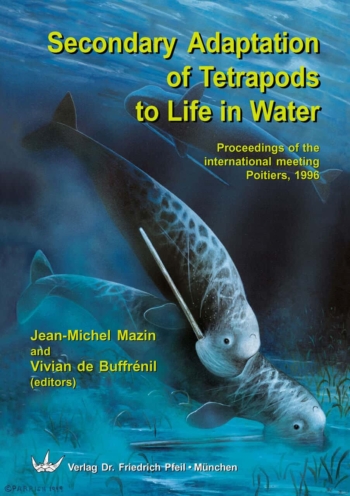
Secondary Adaptation of Tetrapods to Life in Water
80,00 €zzgl. Versandkosten / Versandkostenfrei in D
-
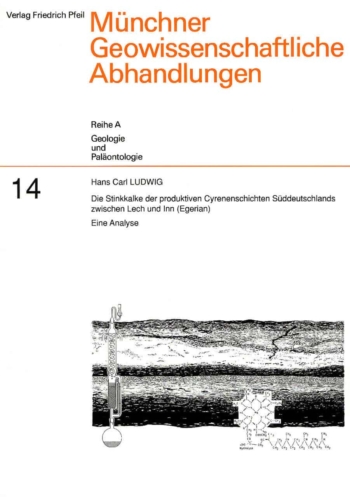
Die Stinkkalke der produktiven Cyrenenschichten Süddeutschlands zwischen Lech und Inn (Egerian)
30,00 €zzgl. Versandkosten / Versandkostenfrei in D
-
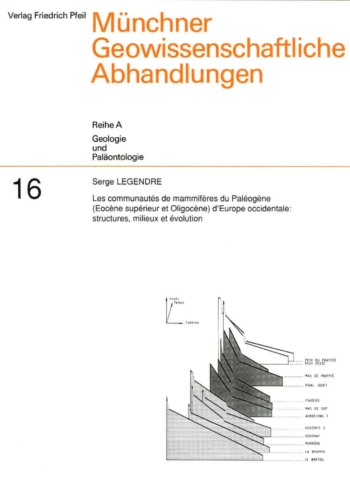
Les communautes de mammiferes du Paléogene
30,00 €zzgl. Versandkosten / Versandkostenfrei in D
Wir sind gerne für Sie da
Verlag Dr. Friedrich Pfeil
Wolfratshauser Str. 27
81379 Munich – Germany
Tel.: +49 89 55 28 6000
Fax: +49 89 55 28 6004
E-Mail: info@pfeil-verlag.de
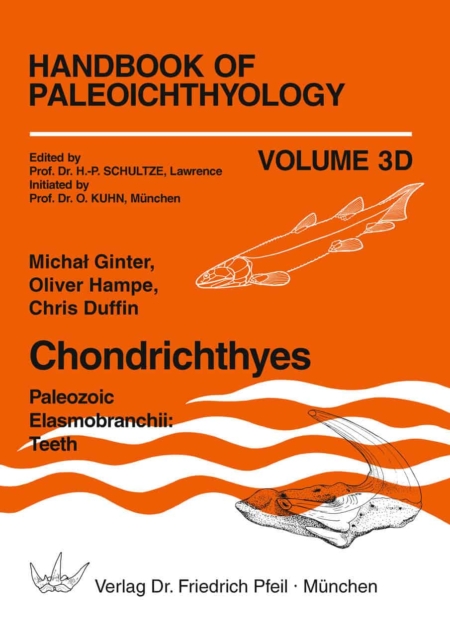
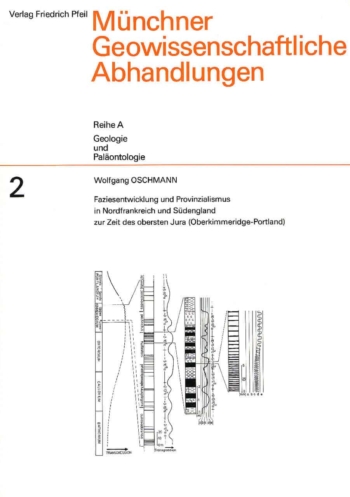
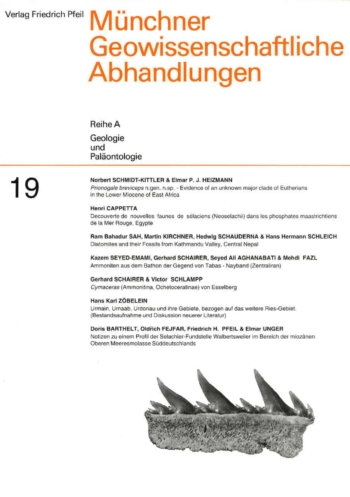
Bewertungen
Es gibt noch keine Bewertungen.